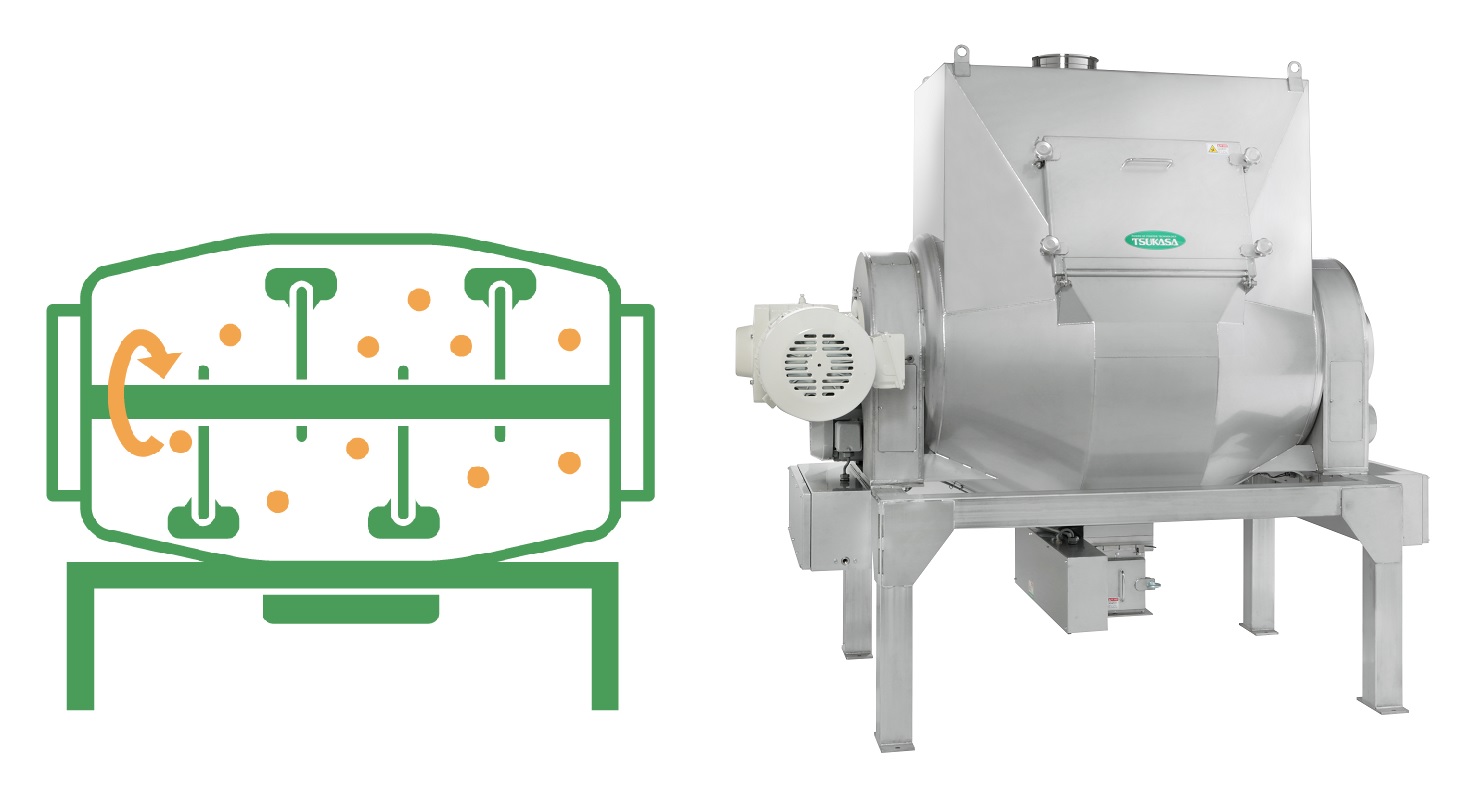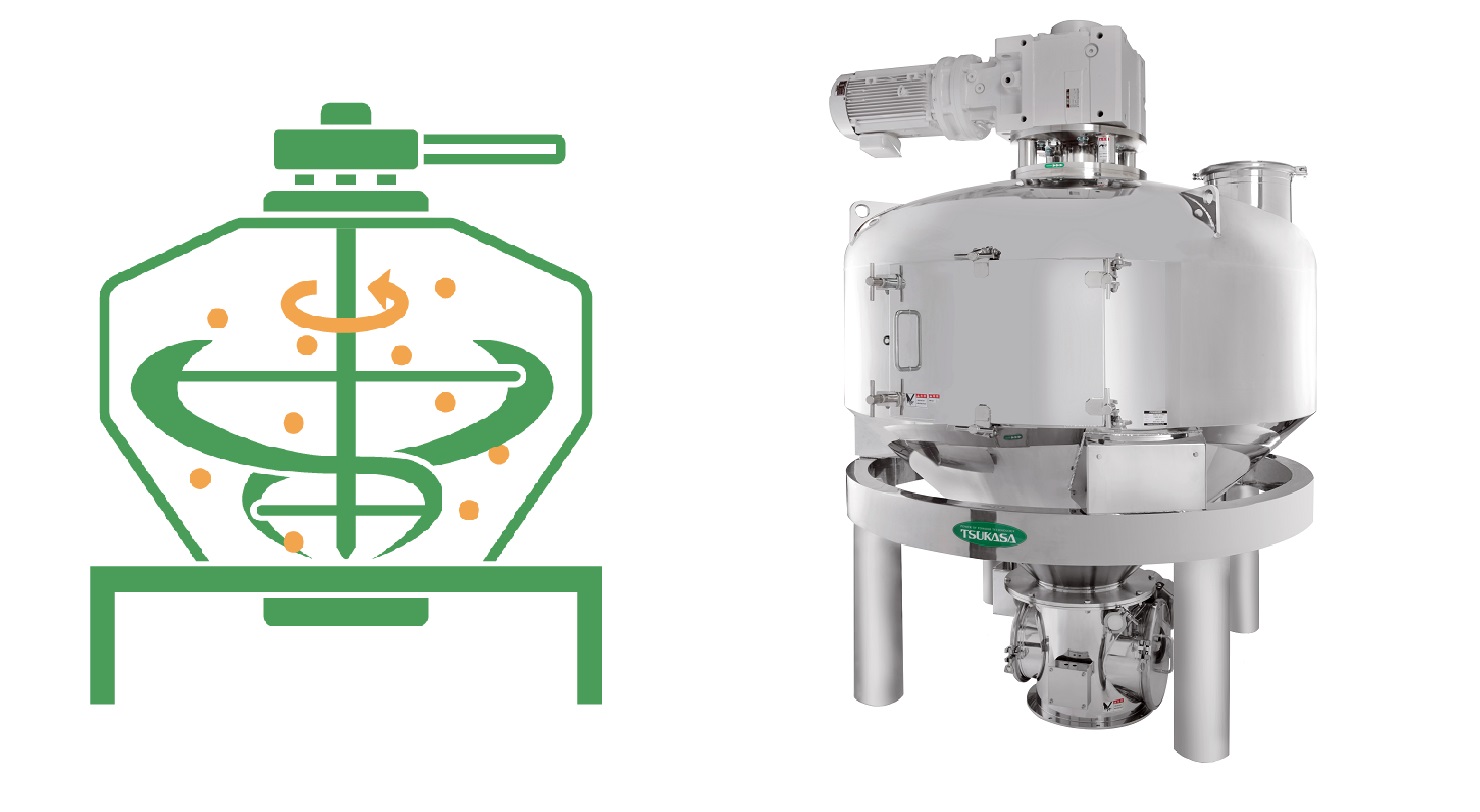Case Studies
Useful Worksite Knowledge
Characteristics of Powder: Mixing
In food manufacturing plants that use powders as raw materials, there is a process of mixing powders and granules together. It is important to select the most suitable mixer according to the characteristics of the material to be mixed, the mixing time, and the operation method.
Here are some points about mixing powders

⚫︎Prepared mixes for pancakes and Danish pastries
⚫︎Prepared mixes for tempura flour and okonomiyaki flour Mixing spices, etc.
⚫︎Prepared mixes for tempura flour and okonomiyaki flour Mixing spices, etc.
TSUKASA's mixers (shaft rotation type) can be divided into two main types
If there is a difference in specific gravity between the raw materials
PowMixer Conical & Horizontal Model
Creates a three-dimensional mixing flow throughout the entire machine, enabling uniform mixing of powder in a short amount of time, regardless of differences in specific gravity and grain size.

If you want to reduce the residue of mixed raw materials
PowMixer Conical & Vertical Model
Excellent discharge of raw materials minimizes residue remaining in the main unit. Specially shaped paddles create a unique mixing flow that softly mix powders and liquids.

Easy to clean and maintain
The shape of the main unit has been devised (boltless, etc.) so that as little powder as possible remains inside the machine, and even the smallest amount of residue can be washed away with water. In particular, the "Vertical Model" has good drainage structurally and allows frequent disassembly and washing by adopting a completely washable outlet.
Also supports adding liquids such as oil
If you need to add liquids, such as oil, water, syrup, or scents, you can also add liquid addition equipment as an option. A chopper unit prevents the formation of clumps and ensures that the liquid is evenly spread throughout the mixture.
Also available for controlling the temperature of powders
In addition to mixing, mixers can also be used to control the temperature of powders. Air-blending and jacket systems are used to efficiently cool powders in the summer and heat them in the winter.
In accordance with the customer's operating environment
TSUKASA puts the raw materials that the customer plans to mix on a prototype line and performs strict checks on the mixing time and quality of the mixture. For example, we determine the optimum mixing time by dividing the mixing time into short periods, taking samples at several locations in the machine and having the customer evaluate the results.


